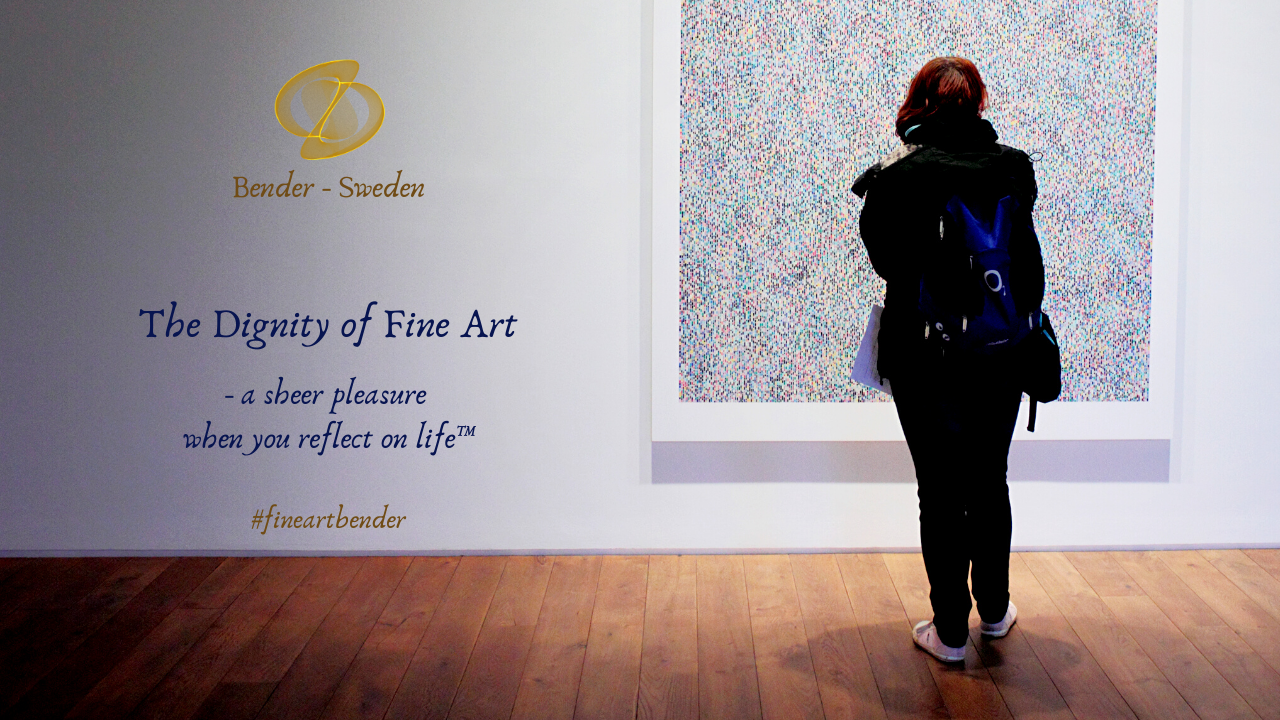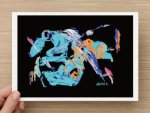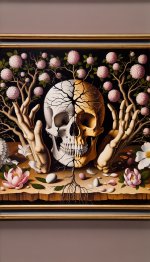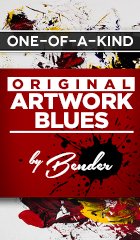Abstract Art
- Connecting to the Soul -
When Human dignity meets abstract art

Abstract Art - Connecting to the Soul
One who is not attuned with fine art may think that abstract art is only a jumble of colors, lines, and shapes. However, this is far from the truth. By definition, an abstract composition is unique in the absolute abandonment of representational intentions. On the other hand, representational or figurative art can be described as requiring mild interpretation or unambiguous. The meaning of this art form is best described by the artist himself.
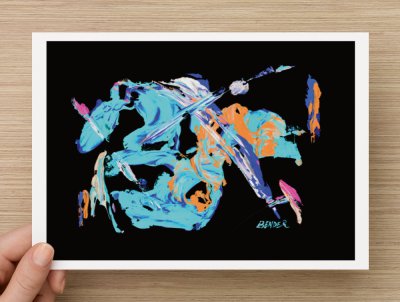
Viewers of abstract works may interpret the work in their own way, even if their interpretation is different from the artist’s. Or, we we can choose to relate to the perspective of Mark Rothko; "It is a widely accepted notion among painters that it does not matter what one paints as long as it is well painted. This is the essence of academic painting. However, there is no such thing as good painting about nothing."
To further expand and perhaps deepen our perspective, we can look at a quote from 'The Art Story'; "Abstract Expressionism" was never an ideal label for the movement, which developed in New York in the 1940s and 1950s. It was somehow meant to encompass not only the work of painters who filled their canvases with fields of color and abstract forms, but also those who attacked their canvases with a vigorous gestural expressionism. Still Abstract Expressionism has become the most accepted term for a group of artists who held much in common." (The Art Story, 2019).
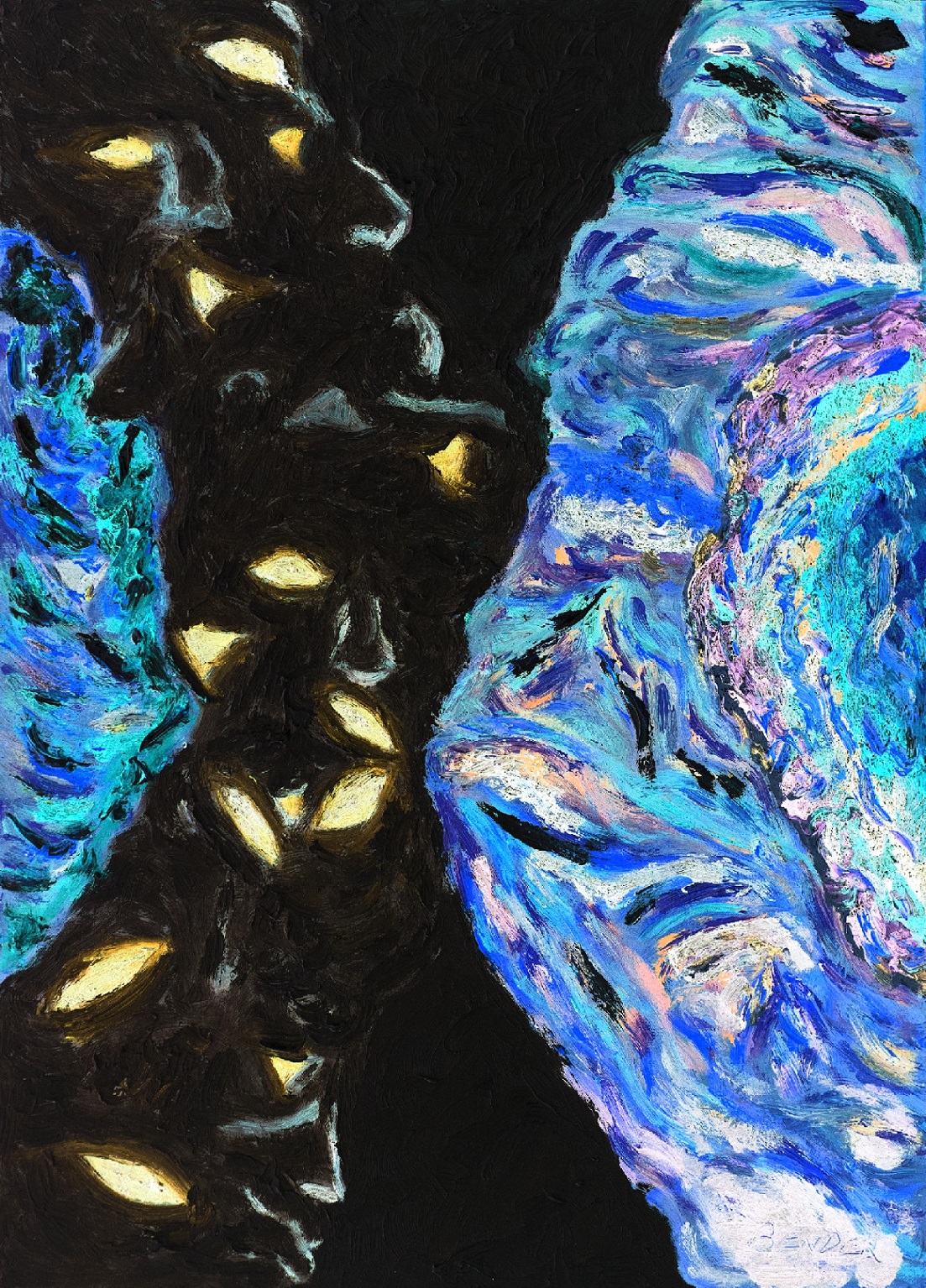
Let's find out more about these historically evolving progress about; - "When was the abstract art movement?"
This form of art is almost always an expression of an artist’s soul. This artistic style can be considered contemporary or art modern because of its origins in the 19th century. It is an answer to the neoclassicist style, which was renewed during the 18th century. Non-representational art is synonymous to the Avant-Garde. Its many derivatives include Impressionism, Romanticism, Expressionism, and Post-Impressionism during the 19th century and Cubism, Fauvism, and Surrealism during the 20th century.
Video: What is Abstract Art?
Emotions aside, several abstract paintings by a particular artist may hold common characteristics. Pablo Picasso’s Cubist paintings have similar characteristics, yet his Cubist paintings are different from those of other artists. Gustav Klimt’s abstraction styles are characterized by bold colors and distorted representations of the female form. Other artists also have their own abstraction styles, which are unique only to them. Perhaps the similarity among most abstract works is that these works stem from the artist’s emotions, which are laid out for the world to see. Seeing, of course, also invites to the question; Who is buying art right now?
Many abstract works are geometric experiments done by the artists, who use the principles of art like shape, line, color, and space to express meaning and mood. Figurative and non-representational art both speak to the viewer. Non-representational art is also a conversation between the artist and the viewer. The artist, through the abstract composition, may speak volumes to a viewer with his interpretation of the artwork. On the other hand, a viewer may have his or her own interpretation of the artwork. It is an exchange of ideas between both parties.
Or in the Picasso perspective; "There is no abstract art. You must always start with something. Afterward you can remove all traces of reality."
Behind the scenes of the new exhibition at the Saatchi Gallery in London, which displays the work of new American artists.
Music: Kevin MacLeod
Video: ABSTRACT AMERICA: NEW PAINTING AND SCULPTURE
Abstract artists simply create their works to express their emotions and perceptions, and they present their perceptions to viewer. Abstraction is also another way for an artist to connect with his soul to derive inspiration. Artists may also conceptualize to deliberately attempt to sway the viewer’s emotions or thoughts. An abstract work with splashes of red may incite anger or agitation from the viewer. An abstract work with a soft geometrical composition or shades of blue may remind viewers of tranquility or peace. Here we have another digging path to what is considered abstract.
"Abstract art is art that does not attempt to represent an accurate depiction of a visual reality but instead use shapes, colours, forms and gestural marks to achieve its effect." Tate Org.
Art appreciation is an education for one’s soul. People feed their souls whenever they permit any kind of art to enter their range of perception. This is because people are open to new ideas, deepening or changing of emotions and a connection to humanity’s most exalted facets. Abstract art is not merely composition or the integration of colors and lines. Like any language, it is a form of communication that involves color and composition. It speaks to our soul, as a doorway, just like poetry, far and near music.
Video: Post War Modern ART - Abstract Sculptures, paintings & Artworks
Many people feel uneasy when confronted with abstract fine art. "My five year old could do better than that," or, "What's it supposed to be?" are still common responses to contemporary art. It is a reflection on the pitiful state of art education in our schools that people are still so locked out from the appreciation of some of the most beautiful and meaningful art of our times.
This art form is available for all to enjoy in museums and galleries in most major cities around the world, in particular, in private galleries. A Sunday afternoon spent at say, Tate Modern, of New York's MOMA, just absorbing the sights, the colors, the shapes, without trying to interpret or "understand" them, will start to unlock contemporary art for you. A good question might confirm what we are looking for; Who is famous for abstract art?
Much contemporary art is abstract, but some is figurative. For example, Rosie Snell, who is Professor of Painting at Bristol University, takes modern industrial landscapes and war machines, and depicts them in stark, almost abstract detail. Her output is small, and her work may take some tracking down, but her use of shape and color to almost denature her subject matter is very abstract in feeling, and well worth seeking out.
Video: KLasema ART - Abstract Modern ART : Modern Abstract Geometric paintings and sculptures
Much has been written about this kind of art, and to be honest, a lot of what is written is fairly incomprehensible. So how can you approach an abstract painting if you are more used to looking at portraits, landscapes and the like? It may help to think of natural things like a sunset. A sunset is simply a collection of colors and textures, and yet it is one of the most beautiful and frequently admired sights in nature. Or a stormy sea - again, a collection of colors and shapes which please us and stir our emotions - in fact, just like an abstract picture.
Yes, an abstract picture works in the same way. Look at a piece of contemporary abstract art as you would look at a sky, or the sea. Allow yourself to fall into the picture. Don't look at it with your intellect, look at it with your eyes and your heart. Feel how you respond to the beauty of line and color. Of course, not every piece of abstract fine art will appeal to every person - we all have different tastes. But, seek, and you will found pieces which speak to you, and which you will enjoy, and which will lead to other pieces in their turn.
Abstract art is for everybody to enjoy, and it's well worth making the effort to take it to your heart.
Abstract Art Paintings
It is not always we understand art. Among the few, only a portion of them really understand the concept behind abstract art. What one need to know is that, this conventional art style not only aims at exploring form and color. It depends on what perspective the artist use. This kind of artwork draws away from the traditional representational art and brings the art lovers into the world of their artists. This world may simply be ruled by confused emotions producing obstructed images with no literal meaning.
Role and Purpose of Abstract Art Paintings
Abstract art paintings may or may not bring into mind any specific real life object since their aim is not to represent. Nonetheless, they still elicit the emotional reactions expected from any good piece of artwork. As such, paintings made using this kind of art are highly recognized and appreciated. The painting need not show the viewer anything specific and need not communicate a clear message. This makes one wonder why then this artwork is highly respected, fashionable and why it is so pricy. A relevant question may be in place; What is a painting? Or if we put something to the question, What makes a painting a painting?
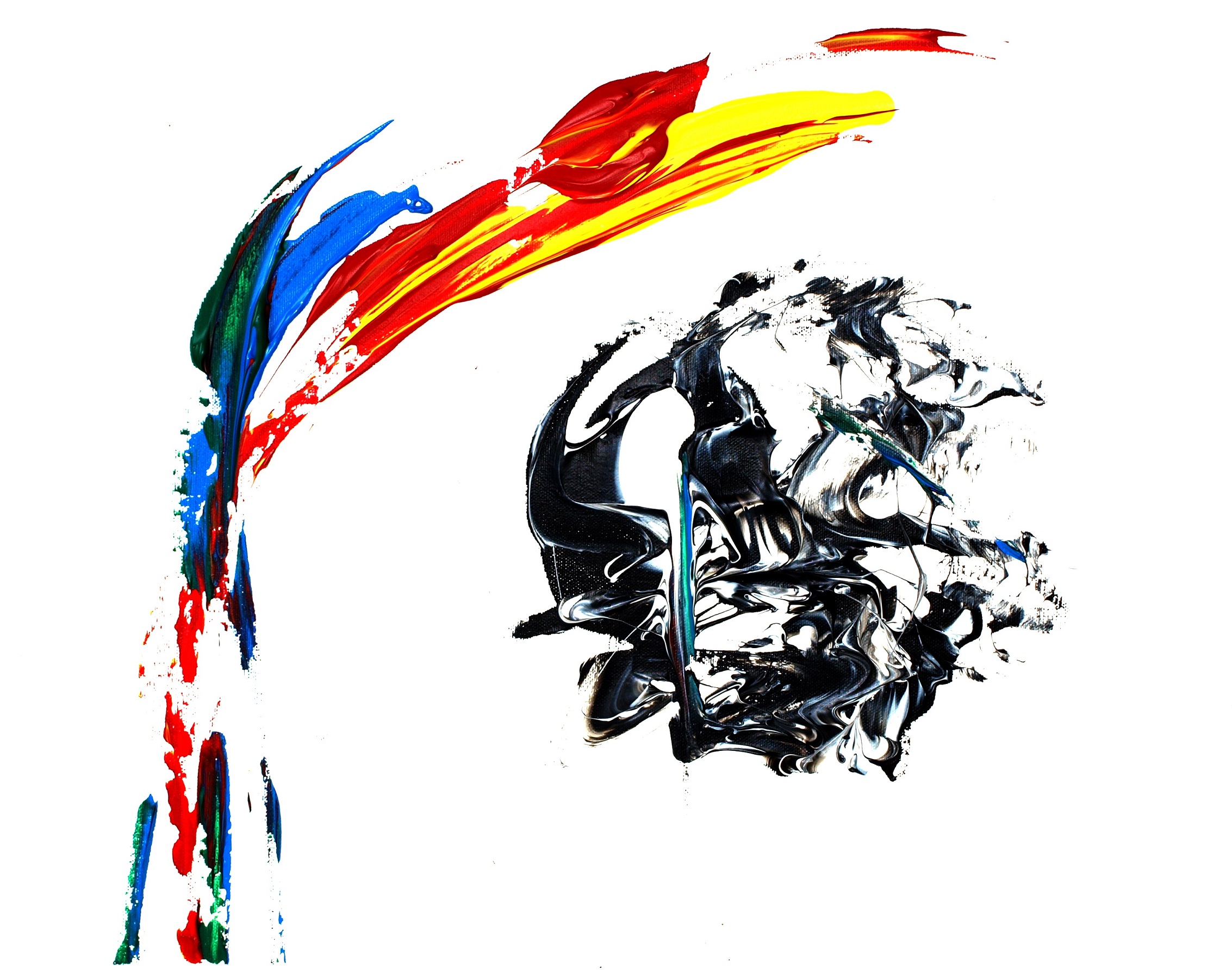
By simply being there and being beautiful, this form of art brings satisfaction to the owner and viewer. All and any abstract art painting requires the observer not to think of what is in front of their eyes. Instead, the paintings desire that the viewers’ let themselves experience the power of seeing and the joy of feeling what they see. Therefore, largely, one can argue that the purpose of the paintings is simply to be appreciated for what they really are. Another question, the hope is that it is also relevant and founded: "What about color in art painting?"
By so doing, these art paintings achieve their main role. This role is to rid you of all your imaginations, beliefs and perceptions. It drives you to a world where nothing exists but the painting itself. The artistic style requires you to draw new simple thoughts about what you see. To achieve what the abstract paintings expect of you as the viewer, you have to be able to see more and at the same time see less.
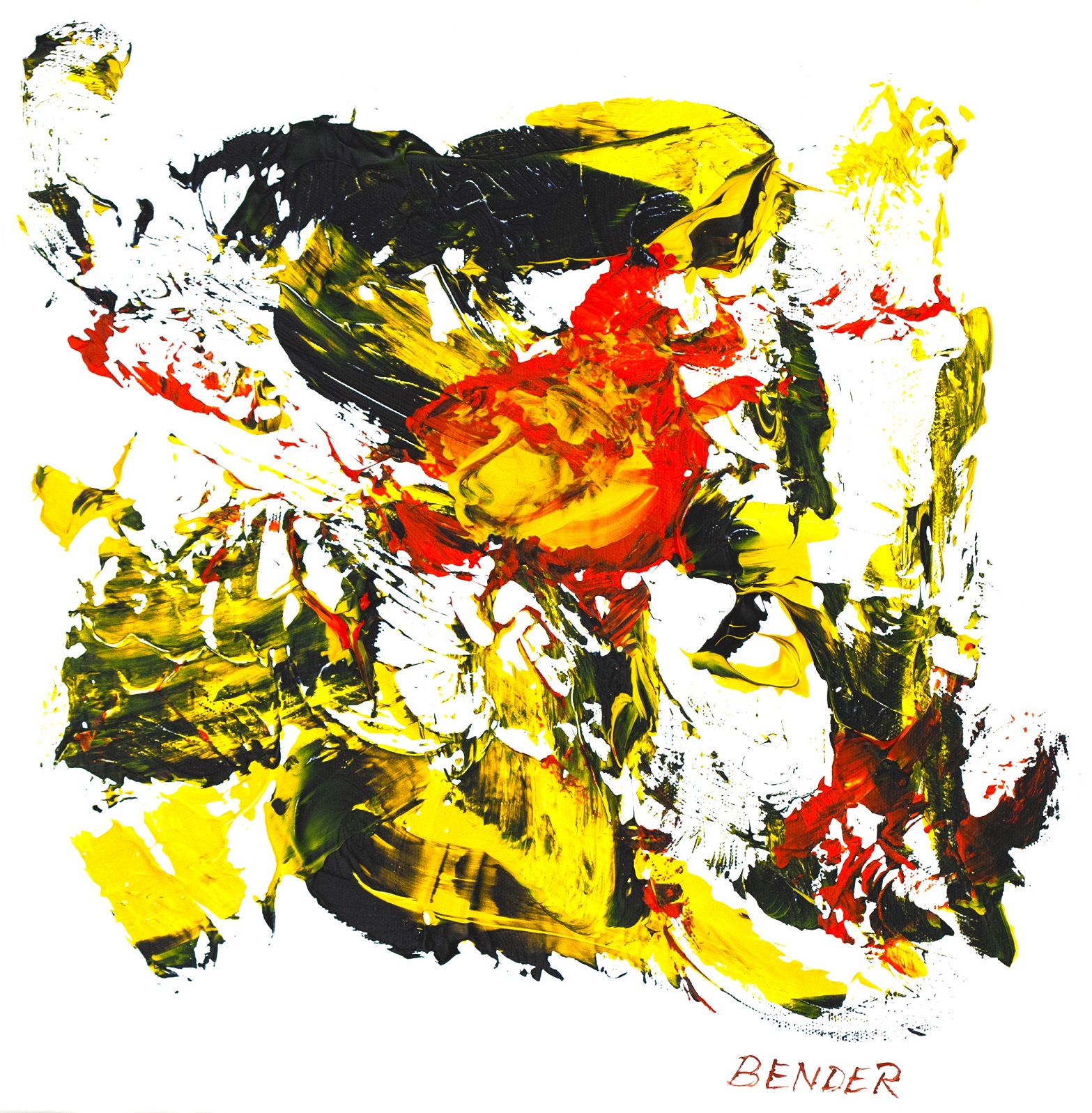
Title: Scenes From A Marriage
The painting above belongs to the museum's permanent collections at
Southern Nevada Museum of Fine Art, LasVegas, USA
Techniques
applied in Abstract Art Paintings
The
abstract art paintings pride themselves for being more explorative than ever
before. They allow the artist not to think about the form of what they are
delivering but only about what they feel as the artists about the subject.
Essentially the wide application of bright colors and texture, are what make abstract art special. The paintings show neither restriction, not in form nor how much color and texture an artist desires to use. This then makes it more emotional and capable of drawing the buried, vulnerable beings in us and awakening a new understanding.
Abstract paintings are not exactly about nothing per say. Above color and texture, they communicate vivid patterns, lines and shapes. The paintings talk more about their own composition and process than anything else does in your surroundings. Artist Jackson Pollock offer this perspective: "New needs need new techniques. And the modern artists have found new ways and new means of making their statements... the modern painter cannot express this age, the airplane, the atom bomb, the radio, in the old forms of the Renaissance or of any other past culture."
Categories
of Abstract Art Paintings
Abstract
paintings serve different purposes. Also, they harbour different artistic
styles and preparation methods. This exceptionality found in every single
artwork makes the paintings to be classified in different categories. For
paintings prepared to represent nothing at all in most cases and where the
techniques employed are more or less the same, these categories are what
represent their use and mode of creation. The common categories include the
abstract wall art and abstract digital art. Is there any connection between abstract art and contemporary art? Perhaps we also need to know more about the difference between contemporary art and modern art in order to better understand this relationship.
If the artwork you are viewing and interpreting has a title, note that the title is not necessarily literal, it can often be a metaphor. Therefore, you may ideally adapt the title to your person, personality and your life. There is always something to learn.
Abstract Art Figures
Abstract art figures is commonly referred to as non-representational; in simple terms, not a picture of something in the normal objective way people normally see and define objects. This form of art can be a geometric statement, an expression of a feeling, or even the beauty of a curve. Impulsiveness and creativity are powerful forces that drive abstract art. Or, as the Artist Jackson Pollock put it; "It doesn't make much difference how the paint is put on as long as something has been said. Technique is just a means of arriving at a statement."
Nevertheless, is abstract art often criticized by representational artists as unrealistic, when figurative art is itself an abstraction of reality?
"I am back with another abstract figure painting. I just let the painting develop itself as I worked on it. I use alcohol and water to remove some layers to create texture and some interesting effects. I always end my paintings with adding charcoal at the end. Hope you enjoy."
Digging into the subconscious and flattening of the picture plane are some great ideas which have been explored through imaginative visual art abstraction. The artwork can just be a painting which explores a particular shade of color, or captures the feeling of a shape. You can either explore an idea visually, or make an exploration that discovers an idea. To come up with various abstract art figures, see the gallery, you can follow the instructions below:
Make your painting station ready, and avail all the paints and brushes you’ll need to come up with your artwork. You can use some drop cloth in case you intend to splash or splatter paint.
"Time-lapse process of this colorful and abstract portrait of a suspended woman figure. This is called "Purple State". Subscribe if you like it, and follow me on my Instagram and Facebook accounts as well!:"
Using a pencil, sketch out any figures, in case you plan to create a figurative abstract painting. Draw the key elements on a different sheet of paper so as to formulate the composition.
Create your painting in such a way that it makes it quite easy for the viewers to comprehend the work. Don’t add too much items initially because this could create a mixed up work of art. If you want to, draw up the figures realistically because you’ll deconstruct them later on. You can use some reference image in order to help you make the correct proportions. You should keep the emphasis close to the center and think about where it would lead the viewer’s eye.
Use the brushes and apply the paint to the drawing. Utilize striking colors that does not necessarily exist in real life. Make use of your intuition to make some action or even lines of sight within your painting. Your brush strokes’ flow and the colors used will be the major features in making your work an abstract art painting. Allow every layer to dry up before you add more layers. Continue adding more layers up until your painting looks complete.
Keep the major outlines in one piece and make use of the spaces within the paining to add to the abstraction in the work. To increase the excitement, I think this can be a relevant, but opposite quote by Picasso, that can sneak in here; "There is no abstract art. You must always start with something. Afterward you can remove all traces of reality."
Personally, I come up with a spontaneous abstract expressionism artwork. Organize your thoughts on a piece of paper or you can let yourself go the freestyle way. Think of juxtapositions and contradictions of colors and form. You can either splash the paint or make use of a spatula to help scrape thin layers of paints of different colors to express your ideas and thoughts.
Trust in your instincts to lead you and maintain a sense of naturalness. Avoid any thoughtless impulsiveness by making good use of your intelligence. You can use a bit of logic, or a “method to one’s madness” approach, to prevent your painting from becoming a total mess. A couple of relevant questions may be; 1) How do you begin understanding abstract art? 2) Why is abstract art called abstract? and 3) Where do you start with abstract art?
Continue analyzing your work irrespective of the abstract art style you wish to come up with. Add as many layers as you deem necessary to correctly create your abstract art figures. Make use of the freedom that is inherent in abstract art by being spontaneous and intuitive, and also be mindful of the idea that’s embedded in your painting’s fabric.
Back from Abstract art to
Index or Site Map
Since 1987
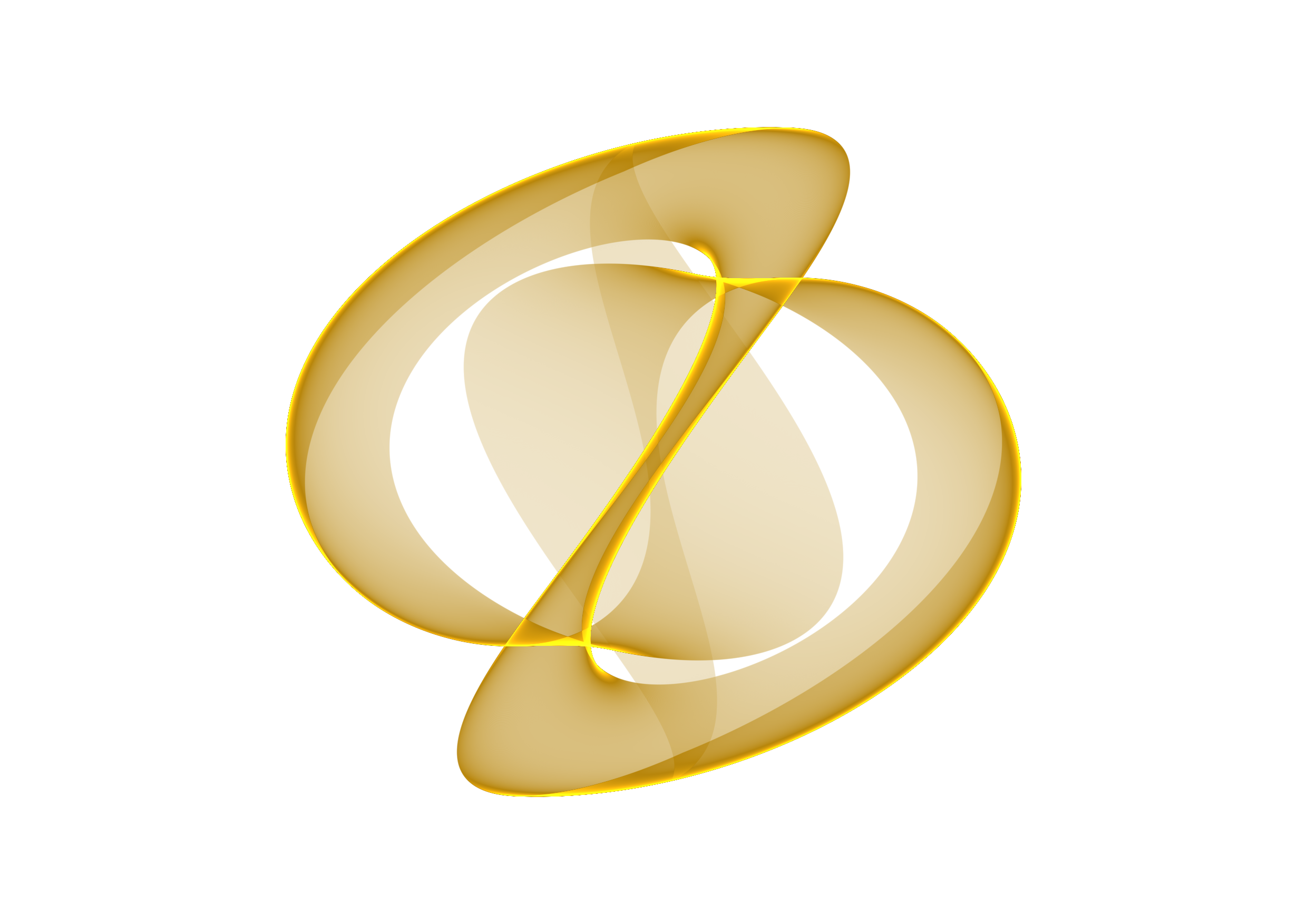
- Vision -
Inspiration - Purpose - Target
- Goals - Strategy
2025?
Ingenting är kraftfullare
än en idé vars tiden är inne .
-Victor Hugo
